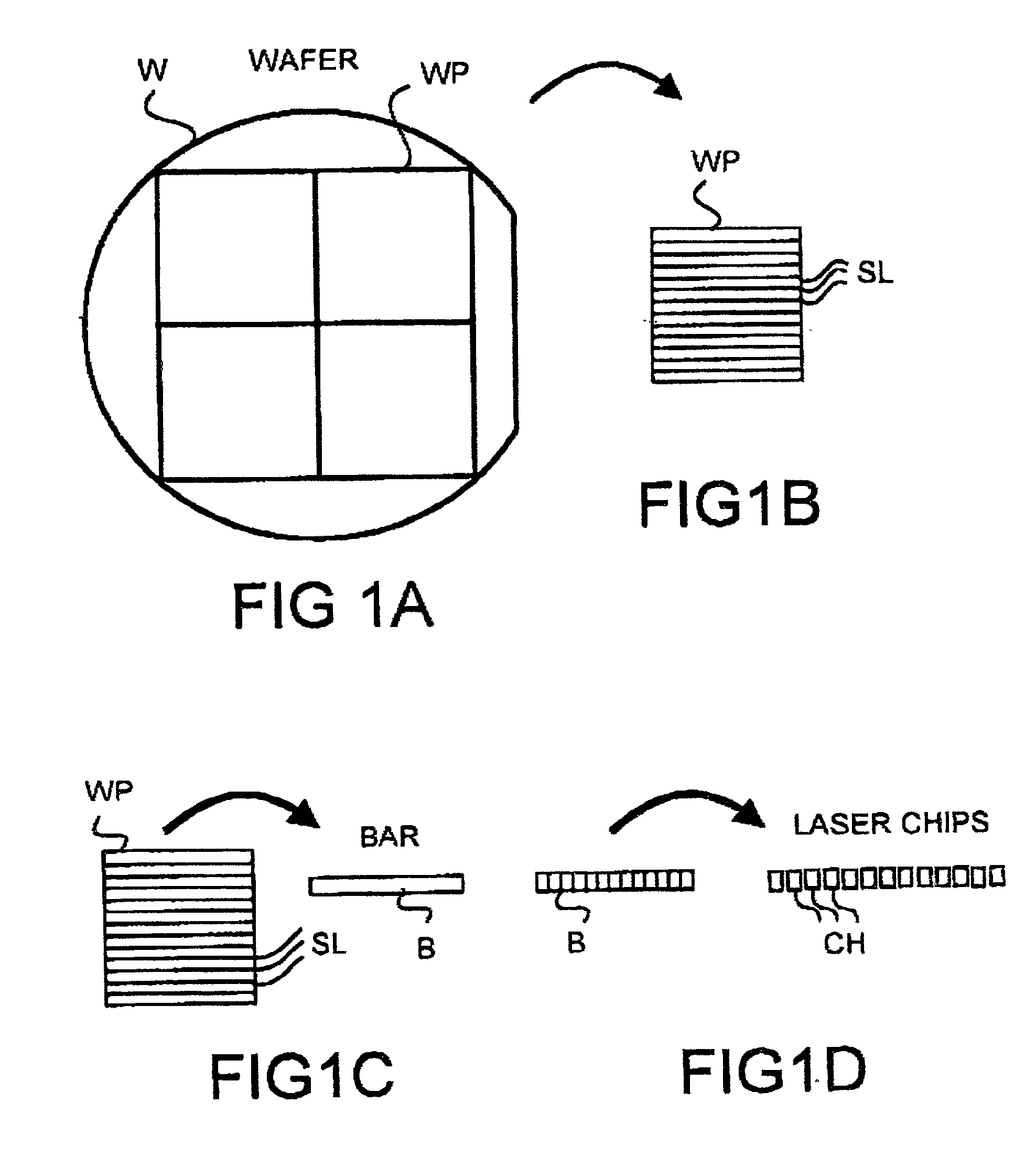Method to GaAs based lasers and a GaAs based laser
- Summary
- Abstract
- Description
- Claims
- Application Information
AI Technical Summary
Benefits of technology
Problems solved by technology
Method used
Image
Examples
second embodiment
[0159] According to the invention FIG. 3 shows a wafer part with a ridge-structure 20 for each laser unit. The ridge-structure has a trench 21, 22 on each side for example to define a wave-guide 23 for the laser beam, cause current blocking, or for improved thermal conductivity. Deposition layer 24 is provided on the ridge-structure 20 and in the trenches 21, 22. In order to have the vertical sides of the trenches dry-etched and coated with the deposition layer the incident and extracted, respectively, beams are moved with alternate beam angles.
[0160] The wafer part is provided with scribe lines SL where cleaving into bars should be made. The wafer is shown without the protecting layer, which is provided onto the deposition layer in the same way as in the embodiment shown in FIG. 2.
[0161] It is the ridge, which defines the wave-guide. Current limit could be used in order to provide a single transverse mode below the ridge or mesa. Also trenches affect the mode and could give a more ...
third embodiment
[0162] Referring to FIG. 4, in which the third embodiment is shown. FIG. 4 shows a section perpendicular to those shown in FIG. 2 and in the front section of FIG. 3. A mesa or ridge profile 30 parallel to the laser channel in the active layer 31 is provided with corrugated periodic structures with sub-micron resolution, e.g. Distributed Feedback (DFB) and Distributed Bragg reflectors (DBR) structures. The side surfaces are preferably inclined even in this embodiment.
fourth embodiment
[0163] However, this need not necessarily be a ridge, the corrugation could also be provided for planar structures. In planar structures the active region 31 is enclosed in a material having a lower refractive index and this demands re-growing. The quarternary material InGaAsP is a material, which is suited for re-growing. This fourth embodiment is not shown in a separate Figure, since such a Figure will not be different from FIG. 4.
[0164] The corrugated structure will preferably be positioned above the active layer both in the third and fourth embodiments. The corrugated structure is intended to provide a periodic refractive index variation, which then determines the wave-length through resonant coupling. Thus, periodic corrugated structures are manufactured by dry etching and in-situ, native nitridation by using nitrogen in an ion beam.
[0165] It is also possible to have a corrugated structure for a part of the laser, which is passive, i.e. no stimulated emission. The structure is ...
PUM
 Login to View More
Login to View More Abstract
Description
Claims
Application Information
 Login to View More
Login to View More - R&D
- Intellectual Property
- Life Sciences
- Materials
- Tech Scout
- Unparalleled Data Quality
- Higher Quality Content
- 60% Fewer Hallucinations
Browse by: Latest US Patents, China's latest patents, Technical Efficacy Thesaurus, Application Domain, Technology Topic, Popular Technical Reports.
© 2025 PatSnap. All rights reserved.Legal|Privacy policy|Modern Slavery Act Transparency Statement|Sitemap|About US| Contact US: help@patsnap.com



